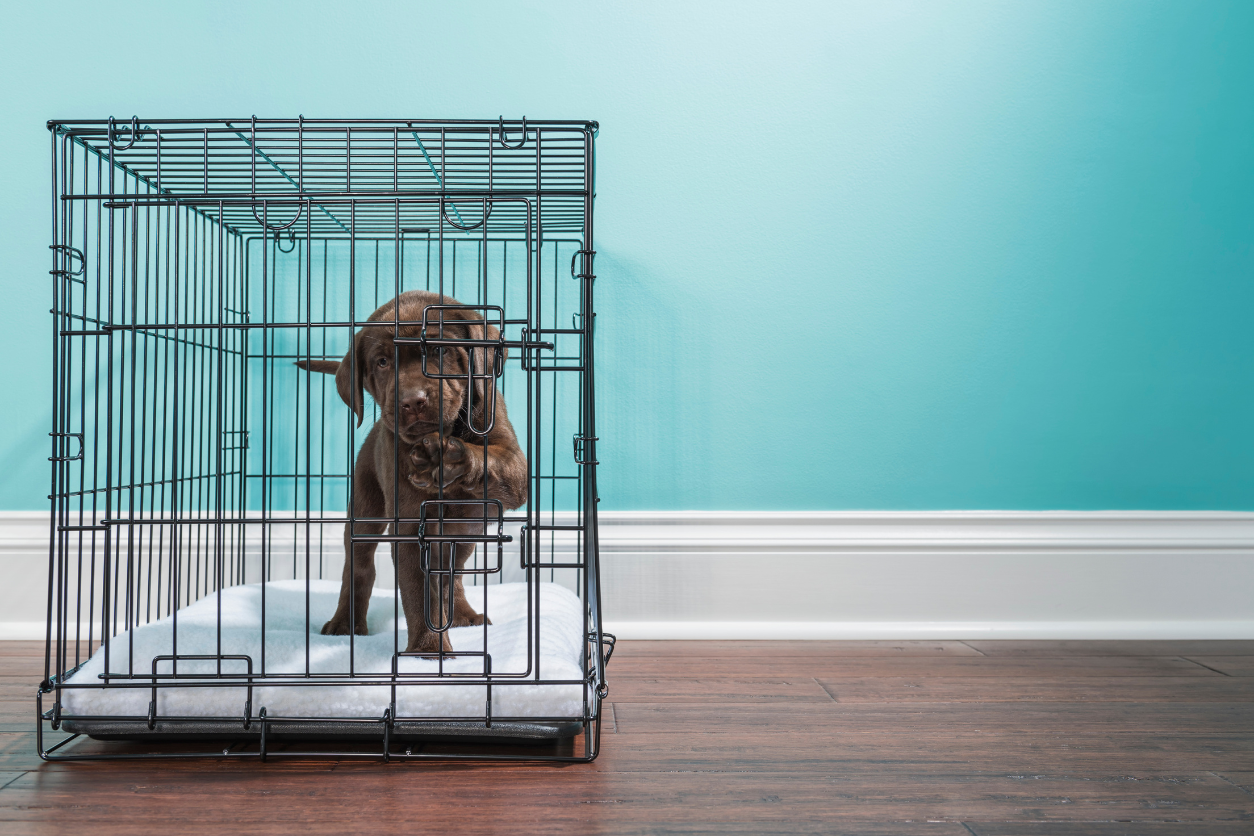Crate Training 101: How Long Can a Dog Stay in a Crate?

Crate training is a valuable tool for both puppies and adult dogs, offering a safe and secure space while aiding in house training and behavior management. Introducing your pup to a collapsible dog crate can provide even further benefits while traveling. However, one common concern among dog owners is how long their furry companions can stay in a crate without causing stress or discomfort.
In this blog, we’ll explore the fundamentals of crate training, discuss factors that influence the duration a dog can safely spend in a crate, and provide practical tips for a positive and effective crate training experience. By understanding the right balance and applying crate training principles, you can ensure your dog feels comfortable and content while crated.
The Benefits of Crate Training
Crate training offers a multifaceted approach to canine care, extending beyond merely creating a confined space. The method provides numerous advantages, including its effectiveness in house training by teaching dogs to control their bladder and bowels, as they tend to avoid soiling their living space.
Crates also furnish a safe and secure environment, preventing dogs from accessing potentially hazardous areas or objects in the owner’s absence. In addition, they play a pivotal role in behavioral management, helping address issues like destructive behavior, separation anxiety, and overexcitement. Crate-trained dogs also tend to experience less stress during travel and veterinary visits.
How Long Can a Dog Stay in a Crate?
The appropriate duration for a dog to stay in a crate hinges on a range of factors, encompassing age, breed, and individual requirements. A common rule is that a puppy can generally hold their bladder for as many hours as their age in months, plus one.
For instance, a two-month-old puppy can typically hold it for about three hours. Adult dogs, on the other hand, can usually endure six to eight hours between breaks, but this can fluctuate depending on the dog’s size and specific needs. Smaller breeds may have smaller bladders, often requiring more frequent potty breaks, while larger breeds may have larger bladders and can generally hold it for extended periods.
Additionally, a dog that receives adequate exercise is more likely to manage more extended crate periods comfortably. Proper crate training and conditioning contribute to a dog’s tolerance for lengthier crate stays. Some dogs may possess unique needs or health conditions, necessitating shorter crate durations or more frequent breaks. Tailoring crate time to your dog’s specific requirements is essential for their comfort and well-being.
Tips for Crate Training Success
For a successful and positive crate training experience with your dog, follow these essential tips:
Start slowly, introduce the crate in a positive manner by placing treats and toys inside to encourage exploration, and allow your dog to get accustomed to it gradually. Always maintain a positive association with the crate and avoid using it for punishment.
Begin with short periods in the crate, extending the time as your dog becomes more comfortable, and practice this when you’re at home to prevent your dog from associating the crate with you leaving. Teach your dog verbal cues like “crate” or “kennel” to signal when it’s crate time.
Ensure your dog has ample potty breaks, especially during the house training phase, avoiding unrealistic expectations regarding their ability to hold it. Avoid overusing the crate, as your dog still needs exercise, social interaction, and mental stimulation.
Gradually practice short periods of separation while your dog is in the crate, extending the time as they become more comfortable being alone. Lastly, ensure the crate is appropriately sized, offering enough room for your dog to stand, turn around, and lie down comfortably.
In Conclusion
Crate training can be an incredibly valuable tool for dog owners when done correctly and responsibly. How long a dog can stay in a crate varies based on their age, breed, and individual needs. It’s crucial to consider these factors and use crate training as a positive and supportive tool to aid in house training, provide safety and security, and manage behavior effectively. By taking the time to understand your dog’s unique needs and providing them with the right balance of crate time and other essential aspects of care, you can ensure a positive crate training experience for both you and your furry companion.
Your Pet’s Best Interest, Always
At Pet Institute, we take pet care seriously. We're dedicated to transparency, impartiality, and the well-being of your pets in every article, review, and recommendation we provide. Our unwavering commitment to these principles ensures that you, our valued reader, always receive reliable and unbiased information. Let us be your trusted guide in the world of pet care and companionship.